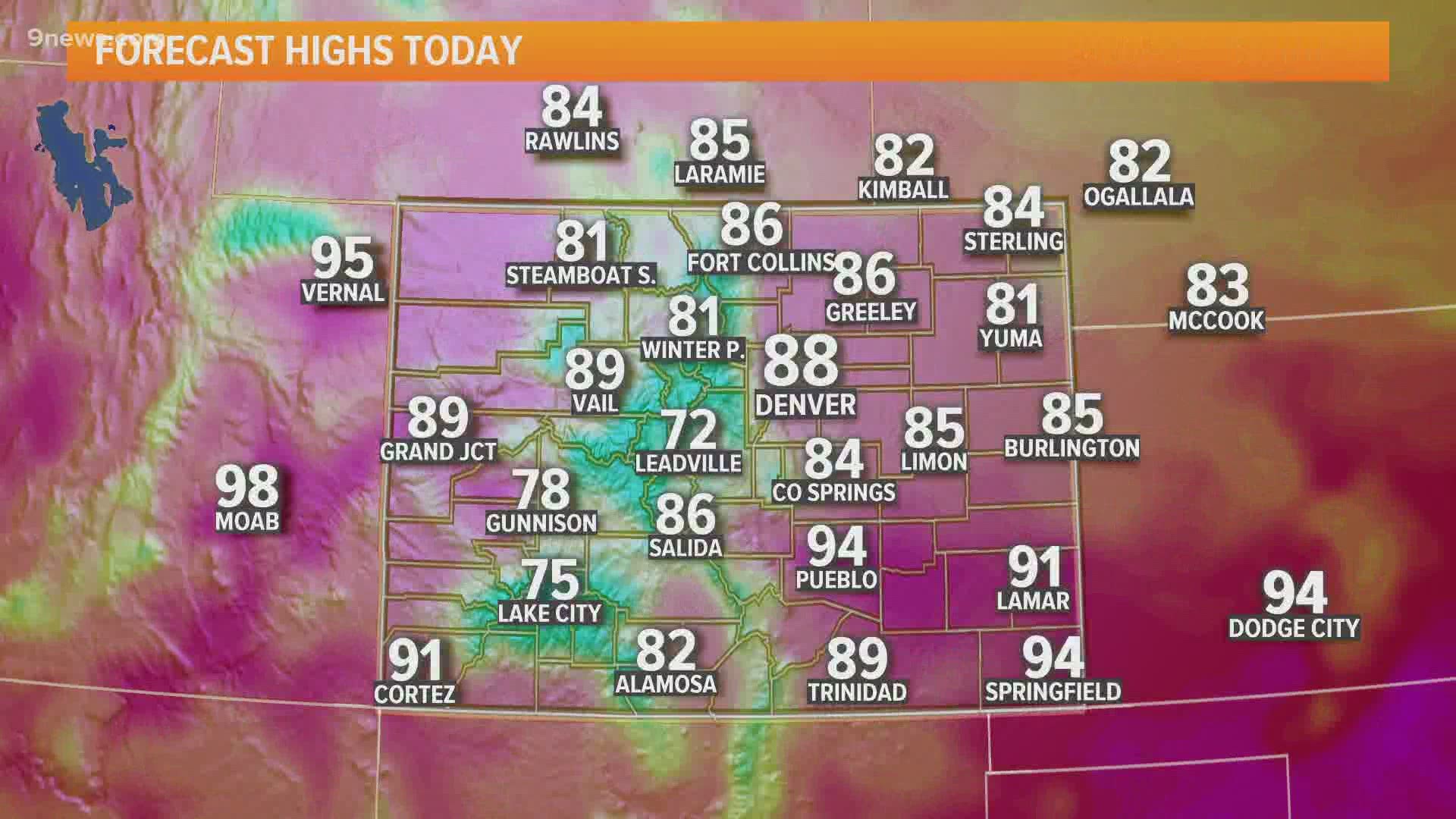

At this time, adverse health impacts are not expected. Some areas may smell smoke and visibility will be at least modestly impacted. Winds from the southwest will transport a lot of that smoke into Colorado on Monday. Regardless of the fire danger in Colorado, a wildfire causing evacuations near Flagstaff, Arizona is causing a lot of smoke. If a fire were to start, it could spread very quickly and be difficult for firefighters to contain. There is a Red Flag Warning through 11 p.m. It will also be quite warm on the Western Slope where the heat will combine with wind gusts up to 60 mph and relative humidity under 15% to produce critical fire danger. The hottest weather in Colorado on Monday will be on the far Eastern Plains where a few areas near the Nebraska state line could reach as high as 110 degrees. At this time, the CBS4 Weather Team has a forecast high just below the record. The record in Denver for June 13 is 99 degrees last set in 2006 which could be tied or broken. Monday should be similar to Saturday with mostly sunny skies and temperatures approaching 100 degrees again in the afternoon. Sunday's high temperature wasn't as hot but was still far above normal with 95 degrees the city. In the case of snowfall, the total precipitation is given in centimetres.DENVER (CBS4) - Temperatures will soar to near record highs again on Monday before a cold front finally breaks relief for a couple days.ĭenver officially reached 100 degrees on Saturday which tied a record set on June 11, 2013. If the precipitation falls as water or sleet, the total precipitation is given in millimetres. The total precipitation is given in inches. For example in temperatures just above freezing, snowfall with the water content of 10 millimetres of water forms a snow layer 10 centimetres thick on the ground, but in temperatures around -20 degrees Celsius the layer formed by same amount of water is 20 centimetres thick. If the water content of the rain is kept constant, the colder the weather, the thicker a layer the falling snow forms on the ground.įor example in temperatures just above freezing, snowfall with the content of a quarter of an inch of water forms a 2,5 inches thick layer of snow on the ground, but in temperatures around -5 degrees Fahrenheit the same amount of water forms a layer of snow 5 inches thick. Temperatures also affect how much a given amount of snowfall grows the amount of snow on the ground. These factors cause the amount of snow on the ground to grow less than the snowfall amount. The total snowfall refers to the snowfall from the cloud and does not take into account local melting, packing or drifting of snow. The total precipitation forecast gives the expected total precipitation for the whole 24-hour day. Please note that especially in inland locations wind gusts can be up to 1,5 to 2,5 times stronger than the 10-minute average wind speed. The wind forecast shows the strongest expected 10-minute average wind speed of the day. Unlike the daily weather symbol, the temperatures, wind information and total precipitation take into account the whole 24-hour day. Daily temperatures, wind information and total precipitation

The cloudiness on the daily weather symbol is calculated as a weighted average of the predicted cloudiness of that day, with most weight assigned to the afternoon hours. You can see the more precise timing and intensity of the rain in the hourly forecast. The rain can be light rain that falls for a longer time period, or a heavy rain of short duration. The amount of rain drops on the daily weather symbol represent the total precipitation amount of that day. The weather in the evening or night time do not show on the symbol. The daily weather symbol gives an overview of the weather between 7 a.m.


 0 kommentar(er)
0 kommentar(er)
